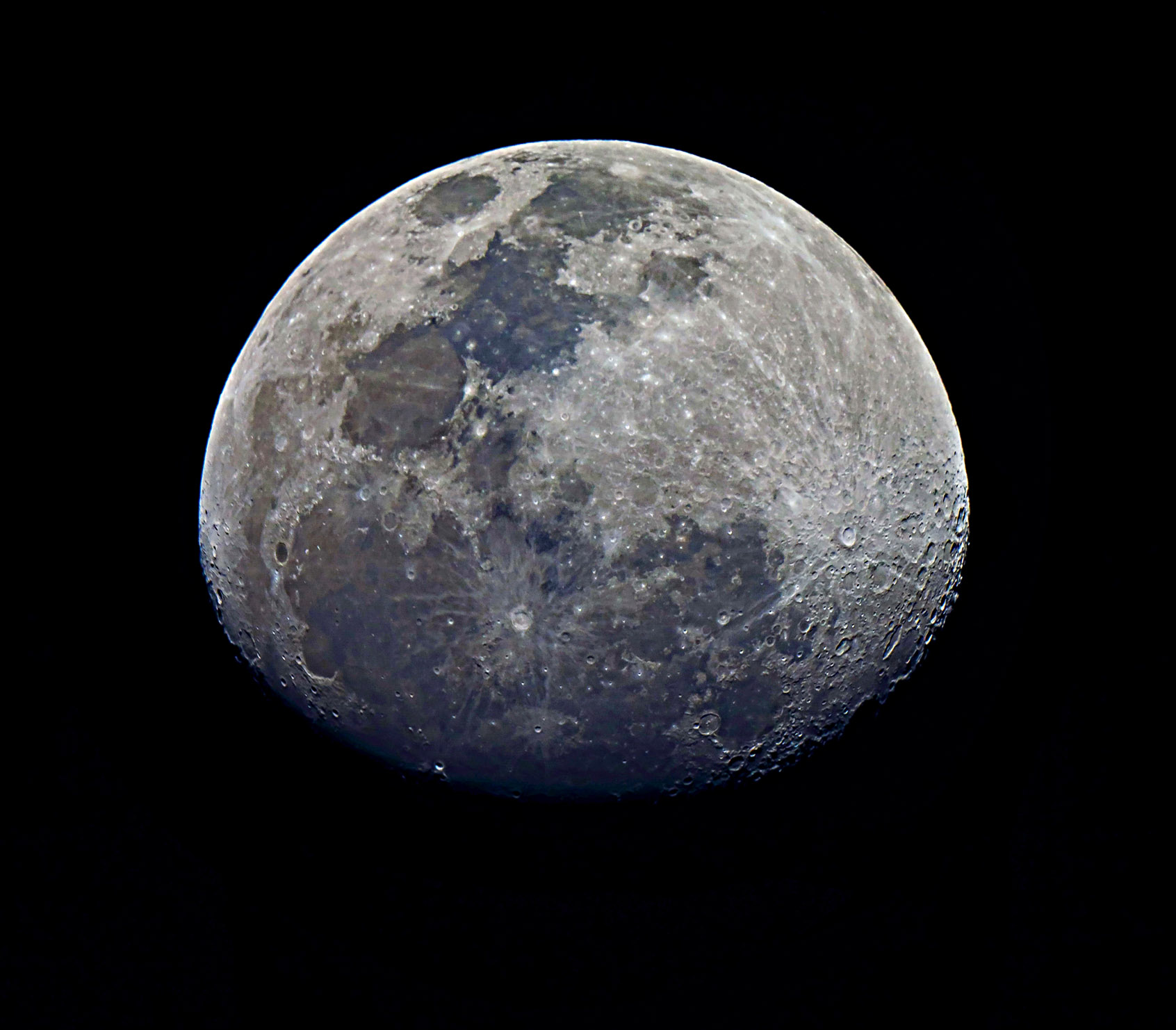November 10, 2024
HDR Eyes
Originally published June 12, 2014

image by Luis J. Fernández, Les Fonts - Barcelona (Spain)
Software can convert a series of normal images into a high dynamic range (HDR) composite that enhances contrast at all levels. If our eyes/brain had such capability this is the Moon we'd see in the sky. Differences in subtle colors would be magnified so we could see the brown versus blue mare colors well known and well seen in Imbrium and along the southern border of Serenitatis. Imbrium has large regions of brown lavas, some defined by just visible flow boundaries, but Mare Tranquilitatis is odder, with patches of different hued lavas almost like clear cut regions seen from aircraft flying over the Pacific Northwest. Pyroclastic deposits stand out in black, especially around Sinus Medii and Mare Vaporum, with pinpricks on the floor of Alphonsus. And Nectaris is veneered by so much ray material that it nearly disappears. Long time readers of LPOD will also knowingly pick out Buch B near Tycho. Ahh for HDR eyes.
Chuck Wood
Technical Details
2014/06/09 19:39 UT. SkyWatcher telescope reflector Dobson 203/1200 mm and Canon EOS 500D camera at prime focus; HDR image.
Yesterday's LPOD: A Mountainous Shadow
Tomorrow's LPOD: Extreme Earthshine
COMMENTS?
Register, Log in, and join in the comments.



